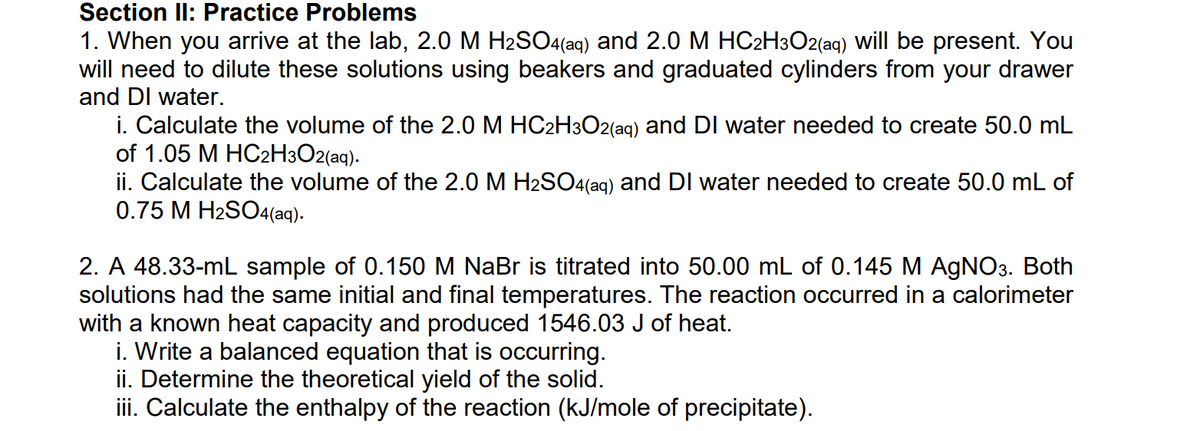1. When you arrive at the lab, 2.0 M H2SO4(aq) and 2.0 M HC2H3O2(aq) will be present. You will need to dilute these solutions using beakers and graduated cylinders from your drawer and DI water. i. Calculate the volume of the 2.0 M HC2H3O2(aq) and DI water needed to create 50.0 mL of 1.05 M HC2H3O2(aq). ii. Calculate the volume of the 2.0 M H2SO4(aq) and DI water needed to create 50.0 mL of 0.75 M H2SO4(aq).
Please help me answer questions 1 and 2. (Questions attached below)
1. When you arrive at the lab, 2.0 M H2SO4(aq) and 2.0 M HC2H3O2(aq) will be present. You
will need to dilute these solutions using beakers and graduated cylinders from your drawer
and DI water.
i. Calculate the volume of the 2.0 M HC2H3O2(aq) and DI water needed to create 50.0 mL
of 1.05 M HC2H3O2(aq).
ii. Calculate the volume of the 2.0 M H2SO4(aq) and DI water needed to create 50.0 mL of
0.75 M H2SO4(aq).
2. A 48.33-mL sample of 0.150 M NaBr is titrated into 50.00 mL of 0.145 M AgNO3. Both
solutions had the same initial and final temperatures. The reaction occurred in a calorimeter
with a known heat capacity and produced 1546.03 J of heat.
i. Write a balanced equation that is occurring.
ii. Determine the theoretical yield of the solid.
iii. Calculate the enthalpy of the reaction (kJ/mole of precipitate).

Trending now
This is a popular solution!
Step by step
Solved in 2 steps









